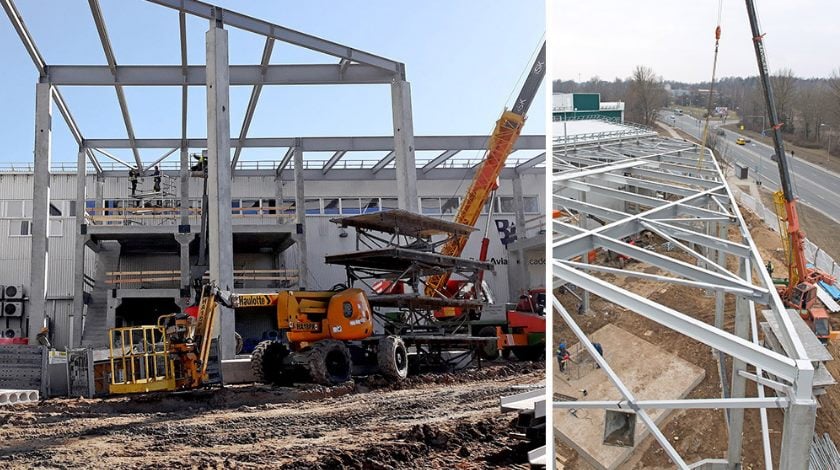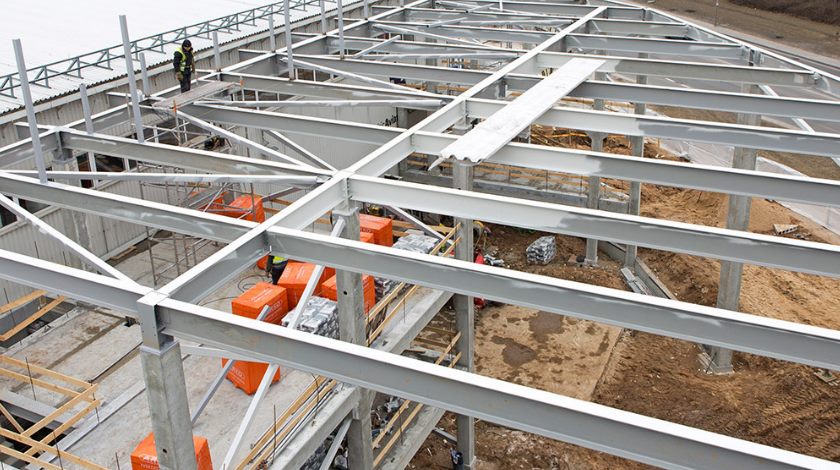A full flight simulator is like an iceberg floating inside the training centre. With a huge cabin visible to an ordinary eye, and with a dozen of features hidden all over the area around the simulator known only to engineers or manufacturers.
Therefore, installation of a FFS is a complex process which, first of all, begins with preparation of infrastructure for a simulator. Meeting thousands of specific requirements which are obligatory to be fulfilled. Therefore, did you know that if at the moment of installation the site is not ready for a safe and professional installation of a FFS, the supplier can even take the decision to delay the shipment of the simulator. The list of specifications highly depends on the region, country and, obviously, the type of the FFS. Therefore, let’s look through the basic requirements that should be satisfied in order to have your FFS successfully settled.
Peculiarities of floor preparation
Placing a full flight simulator is not that easy. The building has to meet its own requirements to be able to welcome an inhabitant simulating flights. First of all, it is necessary to place concrete floor block. Notably, it should be free from the buildings foundation to minimize vibrations to the building structure. The required size of the block, in turn, is determined with respect to the dynamic forces created by the motion system and is advised to be at least 1 meter thick and 8 meters square, although it fully depends on the FFS type. The weight of the concrete is important to handle dynamic forces created by the motion system. Therefore, the concrete pad top surface should be at the same level as the simulator bay.

Take care of space, a FFS is coming
In order to properly function and serve the needs of a client, a simulator must have enough space. In order to determine the amount of space necessary to have, the dimensions of the simulator have to be clarified prior to installation.
Therefore, there are two aspects to keep in mind: the rest position and the possible extreme positions of the simulator in motion.
You may come up with a question: what about a computer room? In general, the computer room has to be settled no further than 15 meters from a simulator. Of course, the shorter this distance is, the more reliable a simulator becomes. On the whole, the most optimal configuration is to have the computer room on the upper floor directly behind the simulator. This way you will also improve the accessibility for servicing. The entrance door to the PC-room should be a double door with a minimum height of 2.4 meters.
Also, manufacturers usually provide a minimum lifting height of the simulator for installing the motion actuators. This depends on alignment of the simulator with the floor pads during the mounting of the motion legs. It is advised that the simulator is centered exactly over the three floorpads, as if it is in the normal rest position. This will enable easier mounting of the motion legs. However, if the simulator is not centered exactly over the three floorpads, the motion legs will not have the same length during installation. This will make the installation process more difficult.
Power games to make your FFS work uninterruptedly
In fact, it would be perfect for a FFS to have two separate power feeders. One three phase plus neutral for the simulator main power cabinet, this has to appear in the computer room, and one three phase for the motion cabinet, located on the lower floor in the simulator bay. Nevertheless, it is not mandatory to have two power feeders. But this way, in case one stops operating, you will secure yourself with another feeder supplying power for the system.
All in all, delivering a facility power that is a clean three-phase power in such manner that it is free of voltage dropouts, voltage spikes is wholly your responsibility. In case something does not meet the required specifications a Smart-UPS has to be installed to ensure reliable and trouble-free operation. Nevertheless, the power requirements highly depend on the country the facility is based in.
More important details to consider
Apart from all the technical aspects related to floor, space, computers, it is important to take care of other key things to ensure smooth FFS operations and beneficial aviation training. For example, one of the central roles during the lifetime of the FFS is played by engineers who take care of a technical condition of the simulator, help to prevent it from any breakdowns. Thus, the room for engineers should be considered in advance and located near the machine.
Also, it is advisable to have a separate room for stocking some of spare parts, in order to handle possible FFS breakdowns as quickly as possible. The stock, as well as the facility where technical specialists can do any repair or maintenance work, should be located close to the FFS to help save time and bring more convenience while looking over the FFS. Moreover, when drawing sketches of the building for the FFS, it is advisable to carefully consider space for the briefing rooms. A convenient location will make work of students as well as that of instructors more comfortable and effective.
These are only basic advice and requirements for the facility that the FFS is expected to be located in. Without even emphasizing the importance of air-conditioning of the building, and a computer room in particular. All these should be maintained at a positive internal pressure to prevent infiltration of dust! Many things to consider, even more to do.

